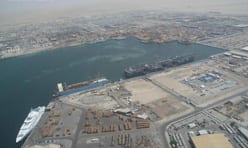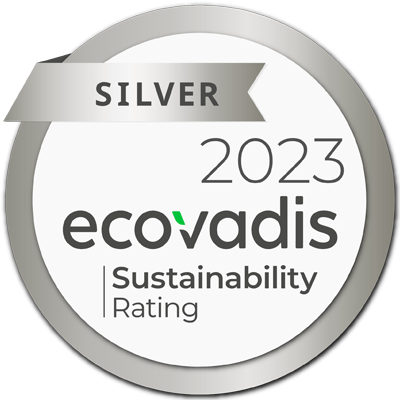Port Name: Jebel Ali Free Zone
Location: Dubai
Owner: Dubai Port Authority
Company: Cavotec Middle East FZE
Cable: TratosFlex ESDB
Date installation: 2011
Tratos & Dubai Port Authority cooperation
Tratos was pleased to supply its Tratosflex-ESDB® cable to be used in the cranes operating in the port. Tratosflex-ESDB is ideal for container cranes such as these, which operate at speeds up to 300 mt/m, as it has been designed to combat the common problem of twisting that affects cables reeling at high speed.
Jebel Ali Port
Jebel Ali Port operated by DP World, UAE Region, is the largest in the Middle East and the flagship facility of DP World’s portfolio of over 80 marine and inland terminals across six continents. It is a deep port located in Jebel Ali Dubai, United Arab Emirates.
Jebel Ali Port, the world’s largest man-made harbour, is a gateway hub that enables trade across the region and beyond. It is a vital link in the global trade network, connecting eastern and western markets with North Africa, the Middle East, and South Asia. As DP World’s flagship, it is the largest seaport in the Middle East and ranks among the top 10 container ports of the world.
The port’s container handling capacity has grown from 18 million TEU (twenty-foot equivalent units) to 22.4 million TEU. Jebel Ali Port has been voted “Best Seaport – Middle East” for 24 consecutive years.
As an integrated multi-modal hub offering sea, air and land connectivity, complemented by extensive logistics facilities, the Port plays a vital role in the UAE economy. It is a premier gateway for over 80 weekly shipping services, connecting more than 150 ports worldwide.
Did you know?
Jebel Ali Port Container Terminal 1 (T1) has a capacity of 9 million TEU and is one of the busiest terminals. With 15 berths and 51 quay cranes, T1 is the foundation that has allowed Jebel Ali Port to achieve its position as one of the top ten ports globally.
Container Terminal 2 (T2) with 32 quay cranes and 8 berths has a capacity of 6.5 million TEU. Its state-of-the-art technology has decreased the carbon emission by 30%.
Container Terminal 3 (T3) is known for its remarkable technological achievements. It has 5 berths and a capacity of 3.8 million TEU. Inaugurated in 2014, T3 is one of the largest semi-automated terminals in the world equipped with 19 automated quay cranes and 50 automated rail-mounted gantry yard cranes (ARMG). It is capable of handling Ultra Large Container Vessels (ULCV) with capacities exceeding 18,000 TEU.
Container Terminal 4 (T4) will be the next benchmark for the world of trade with capabilities designed to serve the current and future market with a capacity of 3.1 Million TEU.
Tratos supports sustainable developments of ports infrastructure
Tratos is very pleased to supply its high-quality cables to the ports around the world. In doing so, Tratos supports the global endeavours of port authorities in upgrading and improving their operational capabilities, which contributes to the sustainable development of ports and achieving the 17 UN Global Goals.
With this project Tratos has supported:
#Envision2030 Goal 3: Good Health and Well-being
- By 2030, substantially reduce the number of deaths and illnesses from hazardous chemicals and air, water and soil pollution and contamination
#Envision2030 Goal 8: Decent Work and Economic Growth
- Achieve higher levels of economic productivity through diversification, technological upgrading and innovation, including through a focus on high-value added and labour-intensive sectors
- Improve progressively, through 2030, global resource efficiency in consumption and production and endeavour to decouple economic growth from environmental degradation, in accordance with the 10-year framework of programmes on sustainable consumption and production, with developed countries taking the lead
#Envision2030 Goal 11: Sustainable Cities and Communities
- By 2030, significantly reduce the number of deaths and the number of people affected and substantially decrease the direct economic losses relative to global gross domestic product caused by disasters, including water-related disasters, with a focus on protecting the poor and people in vulnerable situations
#Envision2030 Goal 14: Life Below Water
Targets
- By 2025, prevent and significantly reduce marine pollution of all kinds, in particular from land-based activities, including marine debris and nutrient pollution
- Minimize and address the impacts of ocean acidification, including through enhanced scientific cooperation at all levels










